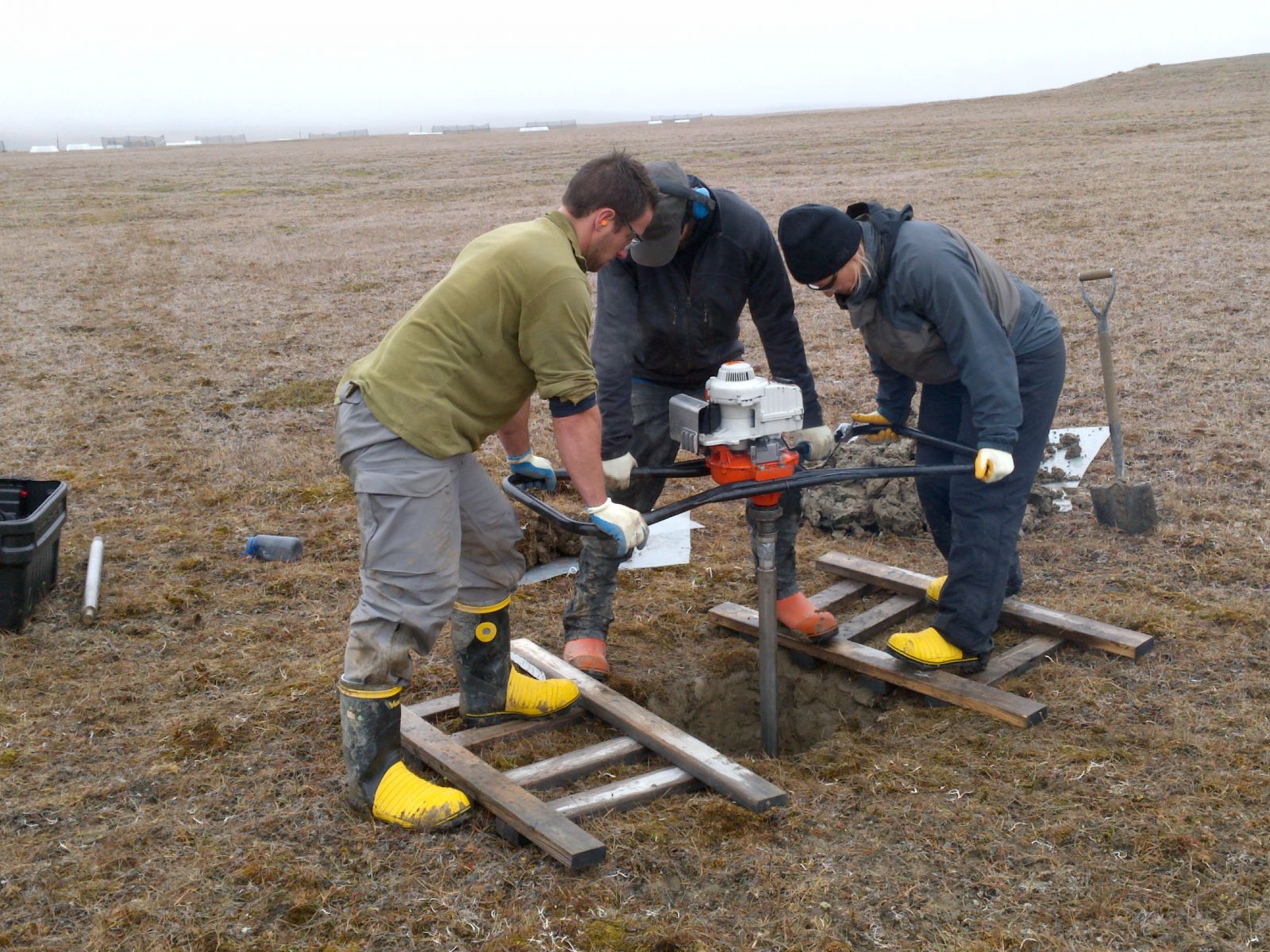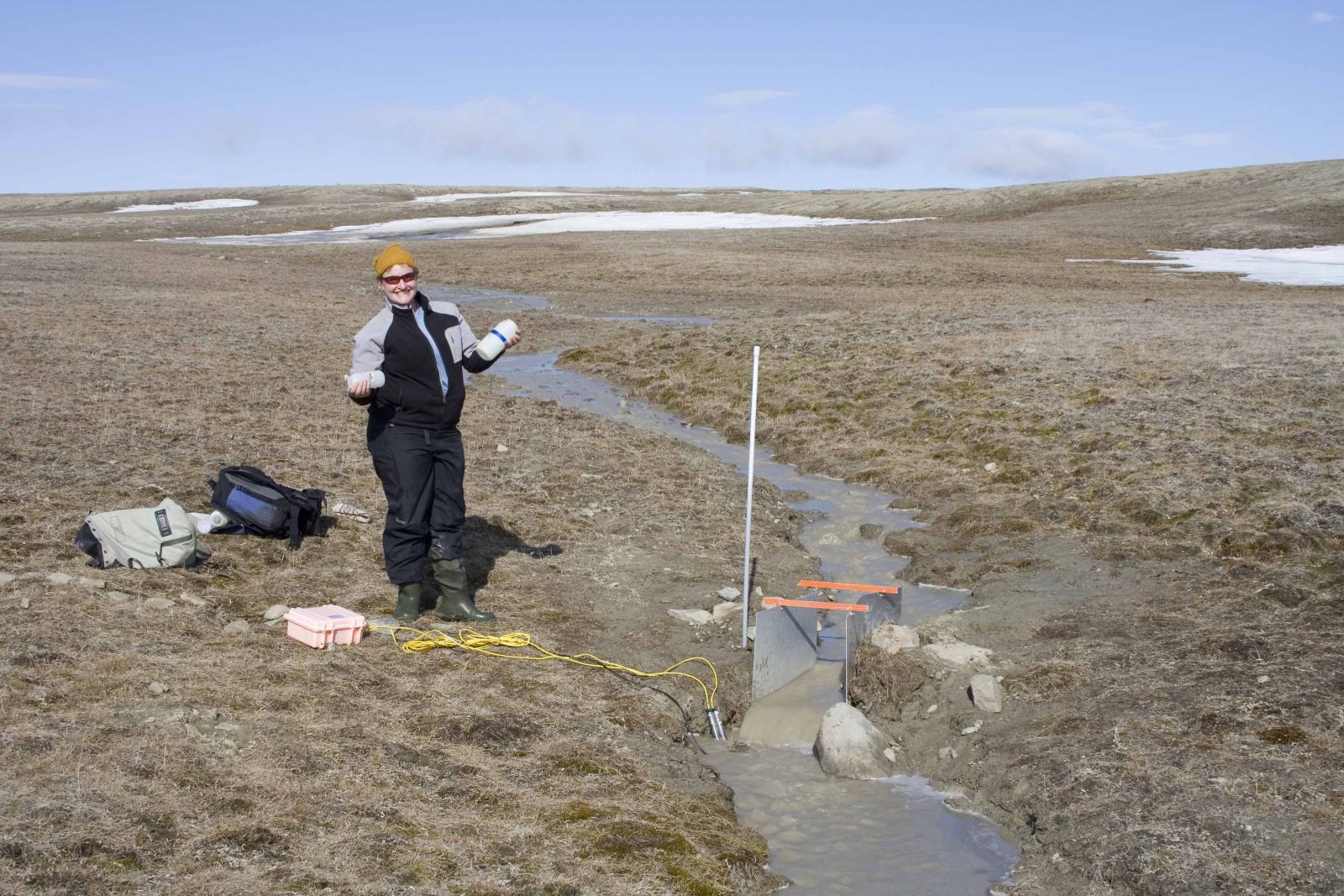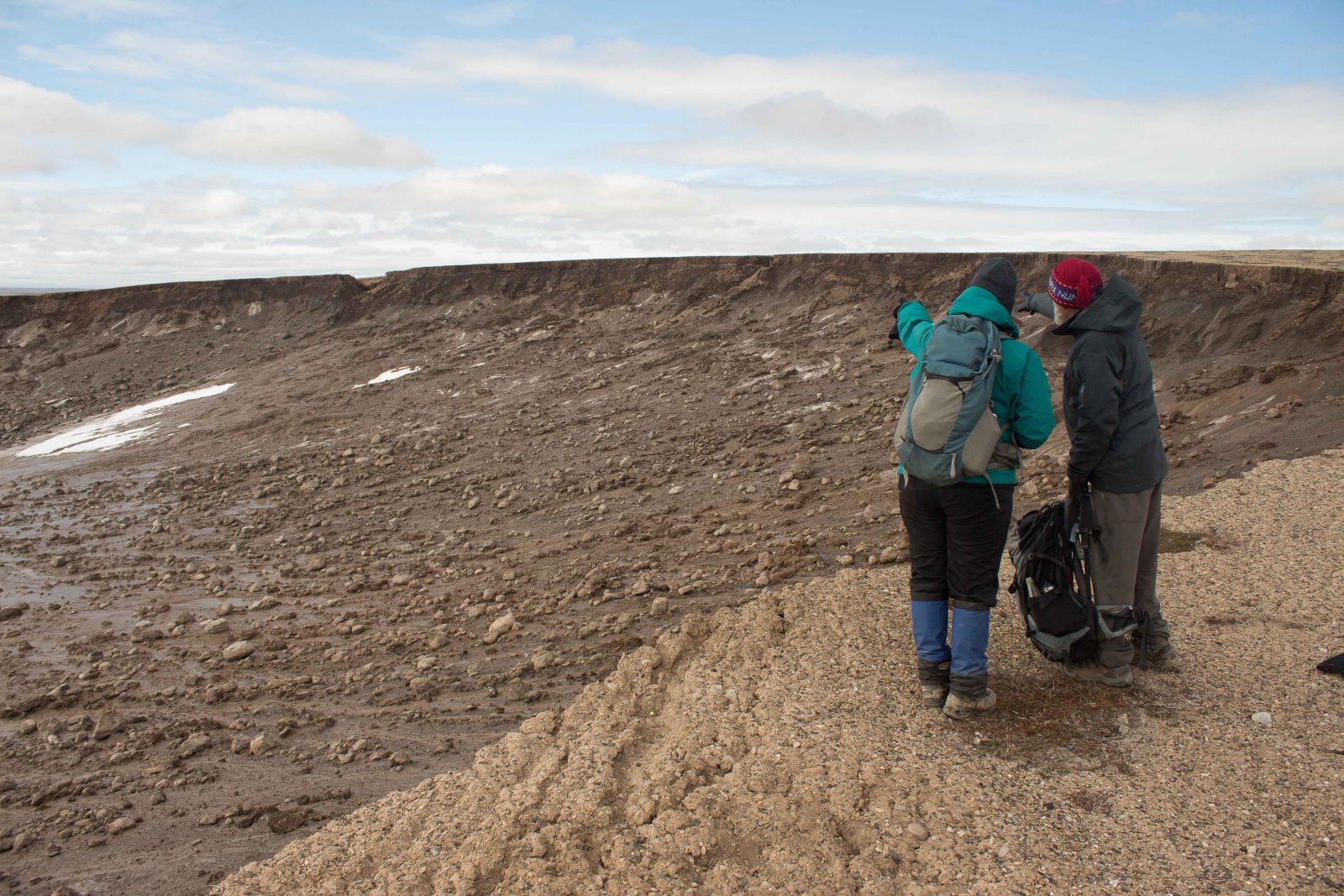
EVEX research is focused on advancing our understanding of the linkages between climate, hydrology and geomorphology in permafrost landscapes. This research is driven by the need to understand how terrestrial landscapes are sensitive to climate variability and respond to permafrost change. This is important to predict landscape stability, water quality and downstream effects in natural systems, and to contribute to land use management and protection in Arctic regions. EVEX researchers have worked across the Canadian Arctic since 1988 and have also carried out research in Alaska and Norway. Our approach to research is a combination of field-based studies to document processes and fluxes, along with laboratory work to measure water quality, and modelling to predict hydrological systems. We work extensively with both watershed and lake systems and also use sedimentary records as a means to investigate long term changes. Of particular interest are clastic varved sediments, which provide high resolution chronology to better integrate with contemporary process and environmental data sets.

EVEX research program is based at two sites in Nunavut: the Cape Bounty Arctic Watershed Observatory (CBAWO) on Melville Island, and the Apex River near Iqaluit on southern Baffin Island, along with research in the Northwest Territories on Banks Island and surrounding region. Scott Lamoureux initiated the research program at CBAWO in 2003 and has acted as Co-Director (with Melissa Lafrenière) to this multidisciplinary site. EVEX research at CBAWO has focused on a number of related themes: contemporary fluxes of water, sediment and particulate organic carbon in the streams; climatic controls over streamflow and sediment transport; the impact of rainfall on catchment processes; permafrost dynamics and change; permafrost disturbance and geotechnique; limnological and sedimentary processes; varved lake sediments as records of past hydroclimate and landscape disturbance; aquatic ecosystem linkages and subfossil indicators of past ecological change and long term sediment transport dynamics.
Current research work at CBAWO is directed at understanding:
- the magnitude of sediment fluxes from surfaces that have been disturbed by permafrost change at various scales
- subsurface water movement and pathways in permafrost terrain
- hydrological and geomorphic controls over permafrost disturbance
- precision mapping of landscape processes with UAV imaging
- the chemical evolution of the lakes in the region
- the application of hydrological modelling to watershed, sedimentary and geotechnical processes.

Collaborative work currently links stream processes with the hydrochemical fluxes, and the characterization and origin of contaminants and organic carbon in the watersheds. EVEX researchers are also working with Environment and Climate Change Canada researchers on contaminant research, ecosystem studies, and sedimentary analyses at CBAWO and other sites in the Arctic. You can follow work at CBAWO on our Blog and Facebook pages.
Research at the Apex River began in 2013 and was motivated by community stakeholder interest in building hydrological research capacity in Iqaluit and increasing knowledge about the sensitivity of the river to climate and permafrost change. We work with researchers from the Nunavut Research Institute and other groups to advance this research. EVEX work is focused on water supply variations, water balance and sediment transport in this hydrological setting.

Research on Banks Island began in 2015 at Johnson Point, a location with an exceptional amount of permafrost landscape disturbance. EVEX researchers are working with NWT and Geological Survey of Canada researchers to identify the impacts of this disturbance, particular in downstream river systems and the nearshore marine environment. Future work is expected to extend this effort to the mainland and to develop several permafrost degradation projects in relation to the new Inuvik-Tuktoyaktuk highway in 2017.
 Department of Geography and Planning
Department of Geography and Planning